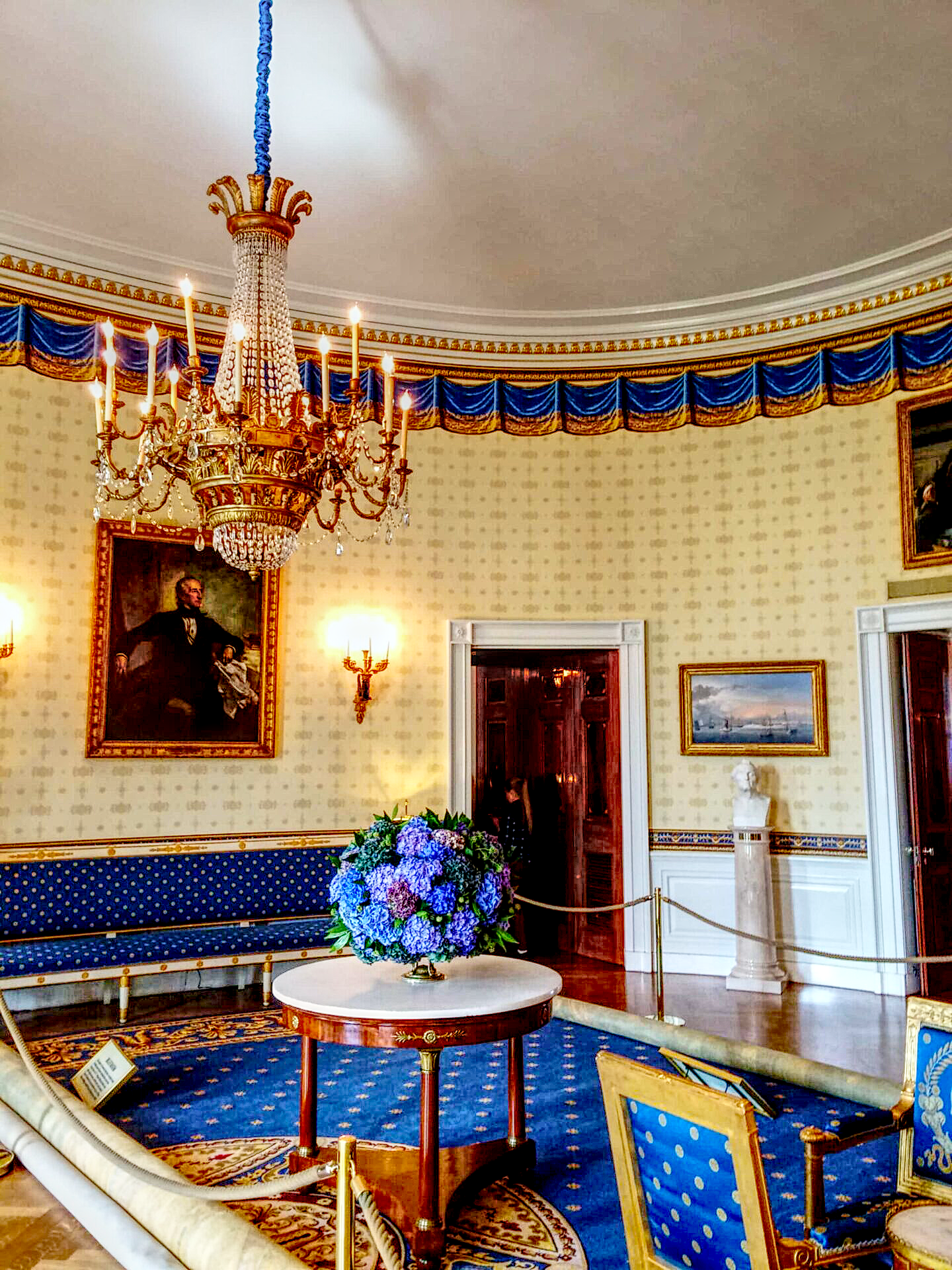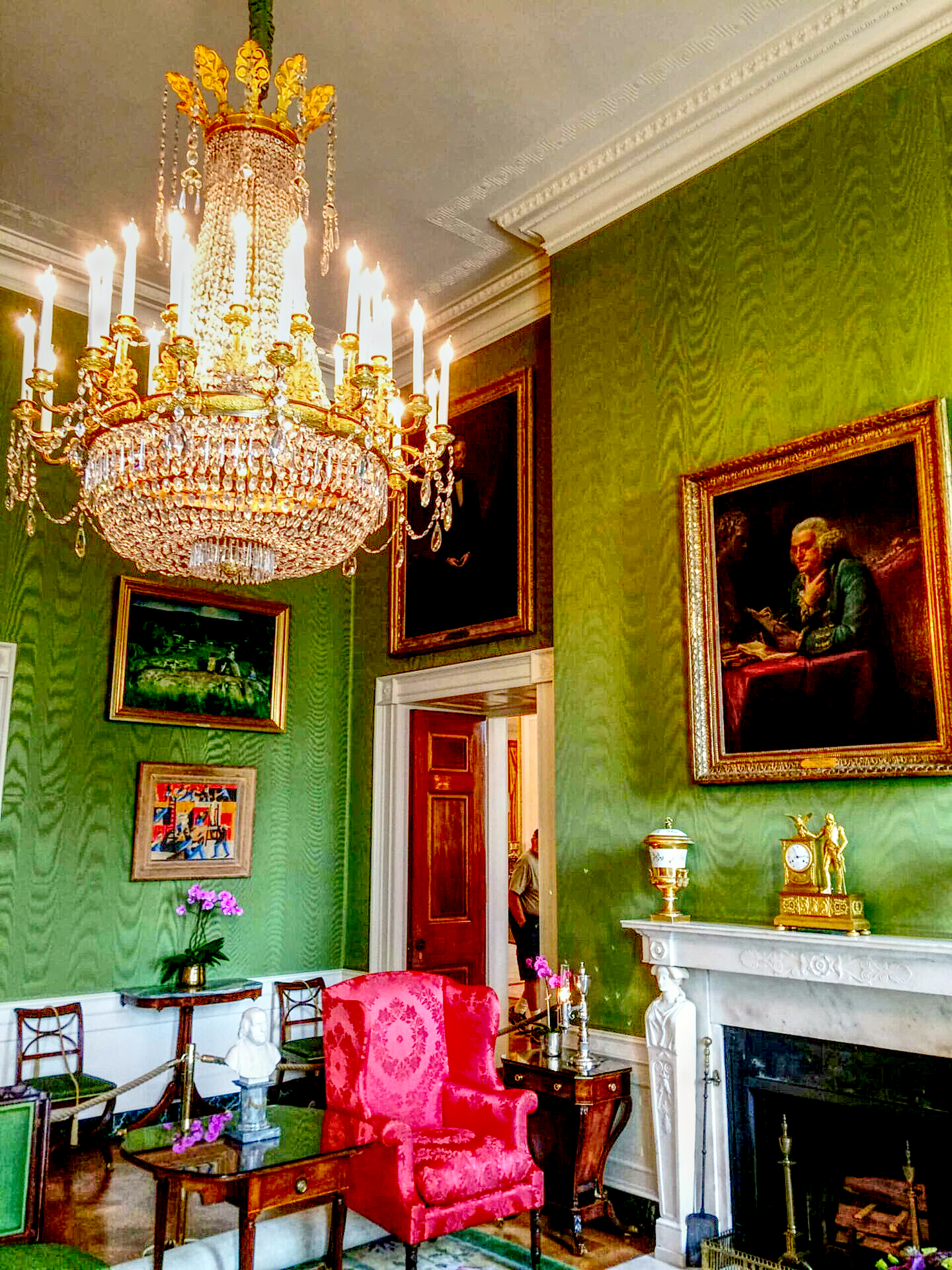The White House, located in the capital of the United States, Washington D.C., serves not only as the political center but also as the official residence of the U.S. President and their family. While its exterior is known for its beautiful white facade resembling a palace, the interior of the White House features rooms themed with various colors. In this article, I will introduce some of the rooms inside the White House that reflect American history and culture, based on my own visit to the White House.
The Contrasting Exterior and Interior of the World-Famous White House
First, let’s discuss the contrast between the exterior and interior of the White House. As the name suggests, the White House is characterized by its white exterior walls. However, inside, the rooms are themed with different colors, making the interior surprisingly vibrant.
The Blue Room: A Room to Welcome Dignitaries from Various Countries
Located on the first floor of the White House, the Blue Room serves as a space to welcome dignitaries and diplomats from around the world. Originally, the room had a red color scheme, but during renovations in 1837, blue was chosen as the theme color, and it has been used ever since. In the center of the room hangs an 18th-century French chandelier, and the floor is adorned with a carpet featuring white and gold emblems.
The Red Room: A Meeting Room for First Ladies and Their Gatherings
Situated on the west side of the first floor, adjacent to the Blue Room, the Red Room is a space where first ladies have held meetings and gatherings. True to its name, the room is themed with the color red and features a style of painting known as “Red Decoration,” which was popular from the late 18th to early 19th century. The room also showcases furniture and decorations used by former first ladies.
The Green Room: A Room with 19th-Century American Furniture and Green Wallpaper
Located on the east side of the first floor, adjacent to the Blue Room, the Green Room features 19th-century American furniture and distinctive green wallpaper. It is used as a parlor for the President to receive guests. The Green Room displays chairs and sofas made in early 19th-century America, offering a glimpse into the history of American furniture.
The Yellow Oval Room: A Private Parlor for the President’s Personal Guests
 Situated directly above the Blue Room on the White House’s second floor, the Yellow Oval Room serves as a private parlor for the President’s personal guests. The room’s theme color is yellow, and its name derives from the “Oval Salon” in the Palace of Versailles built by Louis XVI of France in the 1780s. The Yellow Oval Room is known for hosting the President’s predecessors, their spouses, and their children, serving as a gathering place for those close to the President.
Situated directly above the Blue Room on the White House’s second floor, the Yellow Oval Room serves as a private parlor for the President’s personal guests. The room’s theme color is yellow, and its name derives from the “Oval Salon” in the Palace of Versailles built by Louis XVI of France in the 1780s. The Yellow Oval Room is known for hosting the President’s predecessors, their spouses, and their children, serving as a gathering place for those close to the President.
The White House’s Interior Reflects Various Political Significances
The interior of the White House is filled with architectural designs and interiors that reflect the political significance of the United States. Each room’s theme color, furniture, and decorations have historical backgrounds, and each serves a political purpose. For example, the Red Room is a space where first ladies gather for political meetings, while the Green Room functions as a parlor where the President receives guests. The Yellow Oval Room serves as a place for the President to welcome personal guests and build political connections. Thus, the interior of the White House is closely intertwined with the politics of the United States.



